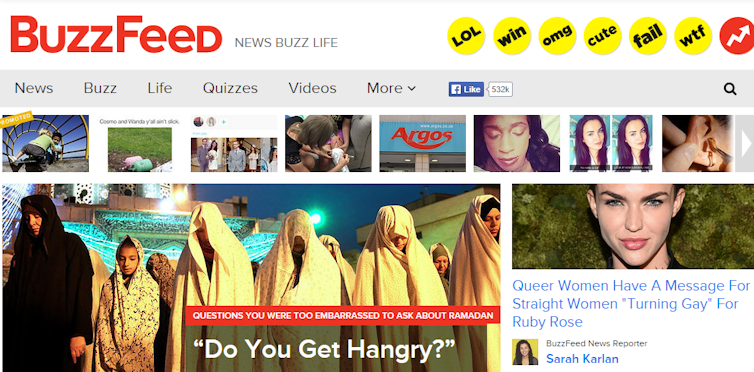The 2015 Reuters institute digital news report has just been published. It contains, according to Matthew Ingram in Fortune magazine, mostly bad news for traditional, mainstream media – confirming what most people already knew anyway: that most consumers of news, particularly younger consumers of news, get it on mobile devices through social media.
More pertinently, they don’t pay for content. Nor, it appears, are they ever likely to do so.
The Reuters report provides insight into digital news consumption based on a YouGov survey of more than 20,000 online news consumers in the US, UK, Ireland, Germany, France, Italy, Spain, Denmark, Finland, Brazil, Japan and Australia. And according to the current data there is evidence to suggest not only an inexorable shift towards mobile platforms for news but also a move to consume online video and “new visual formats”.
According to Nic Newman of Reuters the future media landscape will see:
An intensifying battle for global audiences online involving new players like the Huffington Post and Buzzfeed, expanding global newspapers like the Guardian and New York Times and old stalwarts including the BBC and CNN.
It is the rapid rise of BuzzFeed which merits serious attention. The Reuters report states that it has doubled its reach in the US and UK over the past year and has “established a strong foothold in a number of countries amongst the young”. According to its own publicity BuzzFeed is the social news and entertainment company providing shareable breaking news, original reporting, entertainment and video content across the “social web” to a global audience of more than 1 billion views per month.
Valued at almost three times the worth of the Washington Post in 2014, BuzzFeed is in the process of a major global overhaul. In August last year Chris Dixon, capital investor and BuzzFeed board member wrote that though the company started out focusing on lightweight content such as memes, lists, funny photos and the like, it was now moving “steadily upmarket” with an editorial staff of more than 200 people covering a wide range of topics including politics, sports, business, entertainment and travel.
The plan, wrote Dixon, was to invest significantly more in high-quality content in the coming years. The aim is to ensure – explicitly or implicitly – that BuzzFeed emerges from this latest period of media change as the pre-eminent media company.
Perhaps it is this much-touted move toward “high-quality content” and original reporting that has persuaded so many talented and relatively high-profile British journalists to join the ranks of BuzzFeedUK since it began operating here in 2013 with just three employees.
Among others, late last year Robert Colville left the Telegraph to become UK news director and Emily Ashton left the Sun to become senior political correspondent. More recently, Sunday Times assistant editor Heidi Blake, who reported extensively on the award-winning story into alleged bribery by Qatar to win the 2022 World Cup, was hired to set up and lead a UK investigative journalism unit.
This week it emerged that Janine Gibson, former senior editor at the Guardian, had been appointed as overall editor-in-chief of BuzzFeed’s UK operation.

It’s intended that Gibson, who was also the editor-in-chief of The Guardian’s US operation, will oversee a further expansion of BuzzFeeds’ news staff adding a dozen more journalists to a newsroom currently operating with around 45 people. Upon appointment she said:
I can’t think of a more exciting place in British journalism right now, and am thrilled at the opportunity to further BuzzFeed’s reputation as a force for breaking news, insightful reporting and very good jokes … We are going to do what was done with BuzzFeed in the US and build up a coherent breaking news operation.
So Buzzfeed prospers – and the arguments rage: does its spectacular rise indicate an environment where journalism (mostly) becomes the collection of ready content organised on what Andrew Sullivan has referred to as “an entertainment/public relations site whose core mission is making money”? Or is its rise inevitable and to be welcomed because it potentially draws young audiences toward news, when all indicators suggest that more and more are switching off the TV news and buying fewer newspapers?
There are many who share Gibson’s optimistic vison and all this would suggest that, in a phrase used by Stephen Cushion, we are already in the age of the “Buzzification” of news. Newsrooms the world over are mimicking BuzzFeed’s style. Cushion states that its method of placing quirky items and topic lists sitting alongside more serious stories has been emulated by the established news organisations.
In the words of Marc Fisher, BuzzFeed is not a “scrappy little start-up anymore” – it is a big, profitable news organisation that has appropriated and adapted what it deems necessary from conventional news journalism.
With the likes of Gibson and Blake heading for BuzzFeed are we seeing the end of the (perhaps phony) war between the old and the new? Is this the era of conciliation, asks Fisher, where, “as the lines between old and new increasingly blur, are the two schools of journalism’s core values blending into a hybrid?”
But where Buzzfeed differs significantly from its old school rivals is in its attitude to advertising. As Josh Halliday has pointed out, while the traditional media remains (understandably) coy about its relationship with advertisers, BuzzFeed has made it the cornerstone of its business model with Coca-Cola, MTV, Starbucks and Nike all having sponsored posts on the site.
The fact is that it makes a geat deal of money from branded content or “native advertising” – where ads imitate the nature and style of original content. Clearly, this can lead to confusion over what is a genuine item and what is public relations. But it generates revenue – as Matt Honan writes:
For every 10 people who click directly on a BuzzFeed native ad, the site expects three of them will share it with friends via email or on a social network
But as with old media – think Peter Oborne’s reasons for leaving the Daily Telegraph – BuzzFeed has recently been criticised for allowing advertisers to exert influence over content through fear of losing revenue. In April this year, The New York Times reported that an internal review at the company had found three instances where articles were removed from the site after an advertiser or employees from the company’s business side complained about their content.
The NYT said that the articles criticised products or advertisements produced by Microsoft, Pepsi and Unilever. With this in mind it will be very interesting to see how Gibson reacts should similar pressure be allowed to impinge upon “the insightful reporting” she hopes to oversee in the UK.
That said, the fact is that news is the growth area for BuzzFeed and the appointment of quality people in a time of almost continual upheaval and uncertainty for British journalists is to be welcomed – albeit cautiously. And let’s not be wilfully naïve – all media companies have to make money and have to work with sometimes unwelcome interference, whether it is governmental or corporate.

And as Buzzfeed launches its news app for iOS (“It’s like your friend who always knows what’s going on before anyone else”), let’s ask ourselves why, really, is BuzzFeed investing in news? Chief executive Jonah Peretti told USA today this week:
News is the heart and soul of any great media company. News might not be as big a business as entertainment, but news is the best way to have a big impact on the world. News is also becoming a surprisingly good business.

